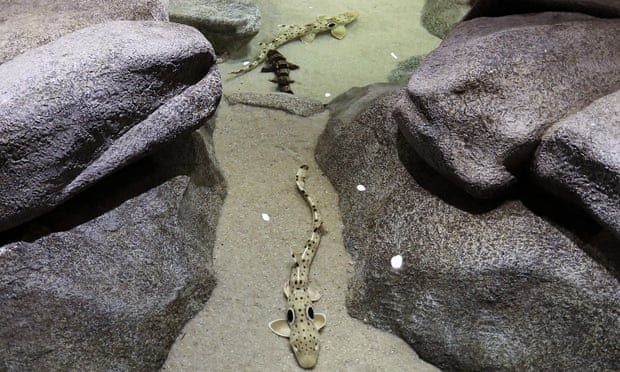A rare shark that can walk for up to 30 meters on dry land, and survive hypoxia for up to two hour has been sighted on a beach in Papua New Guinea.
The fish known as epaulette shark or Hemiscyllium ocellatum uses its paddle shaped fins to walk on land like a sea lion.
Forrest Galante, a conservationist and biologist who watched the rare footage showing the epaulette shark described the scene as “incredible”.
“This is the first time in history one of the Papuan species of epaulettes has been documented walking,” he said.
The footage was captured in May as part of Discovery Channel's annual Shark Week for an episode called “Island of Walking Sharks”.
These types of sharks only grows to around 90cm and poses no real threat to humans.
They are found along southern parts of Papua New Guinea and the northern stretches of Australia.
Scientists believe they evolved this astonishing ability to walk because it enables them to survive increasingly hostile environments as conditions change.
“Such locomotor traits may not only be key to survival but also may be related to their sustained physiological performance under challenging environmental conditions, including those associated with climate change,” a study, published in the integrative and comparative biology journal, says.
“Findings to date suggest that this species has adaptations to tolerate some, but perhaps not all, of the challenging conditions predicted for the 21st century.”
Gavin Naylor, director of the Florida Program for Shark Research at the Florida Museum of Natural History in Gainesville, said: “all traits are selected for when it allows [a species] to survive better and eke out an environment where they're safe and can get food.”
“What epaulettes have learned to do is climb up in the reef and plop themselves in the next tide pool”.
Epaulette sharks can travel more than 30 metres across land and spend up to one hour on it with just a single breath - another evolutionary adaption that helps them survive in tide pools with low oxygen levels.
They hunt for their preferred meal of crabs, worms and other invertebrates in shallow coral reefs.
Although these nocturnal animals are small, they have been known to nip people when handling them.
They are covered in distinctive black dots on their backs that vary so much that no two of the species look alike.
Some scientists, including Naylor, think they can even change their colour patterns whenever they like, although this theory is yet to be proven.


Comments
Post a Comment